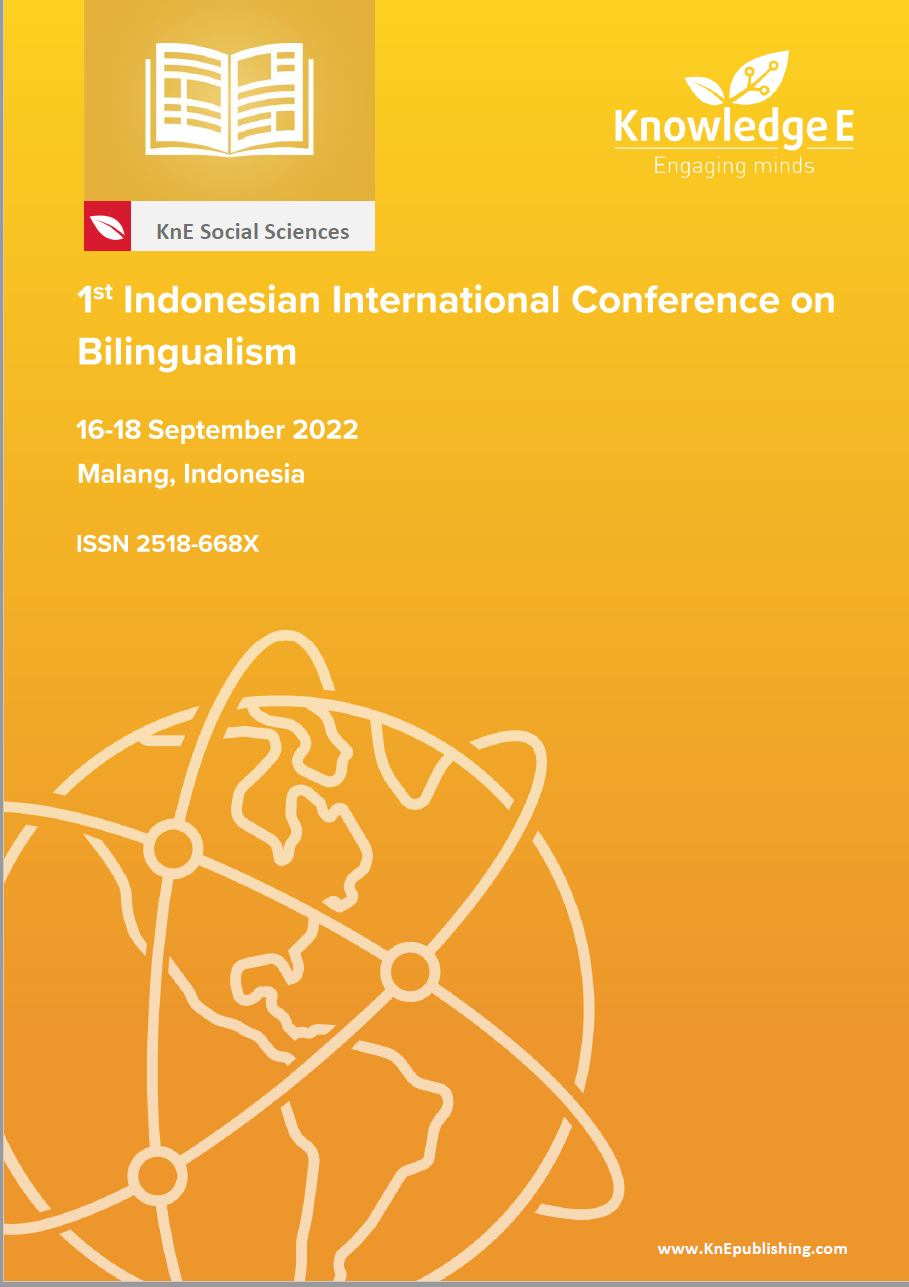Teacher's Perspective on The Implementation of Trans-Languaging in Teaching Deaf Students
DOI:
https://doi.org/10.18502/kss.v8i7.13249Abstract
Trans-languaging in teaching English to deaf students has different practices and perceptions. This study aimed to explore the perspective of a teacher of deaf students in implementing trans-languaging. Interview results of an English teacher and three recordings of the teaching and learning process were analyzed qualitatively in order to get a deep analysis of this research. The teacher was asked several questions about their experience teaching deaf students. The recordings were collected and analyzed to be the supporting data of the interview result. The result showed that the trans-languaging process is a helpful strategy in teaching deaf students because it really bridges the students and the teacher in learning English.
Keywords: translanguaging, deaf students
References
[2] Allard K, Pichler DC. Multi-modal visually-oriented translanguaging among deaf signers. Translation and Translanguaging in Multilingual Contexts. 2018;4(3):385– 405.
[3] Alrayes TS, Alahmed MF. Difficulties that face teaching English to deaf students, and the ways to overcome them from teachers’ point of view, in “Al-Amal” institutes and programs, in the Kingdom of Saudi Arabia. International Journal of International Research. 2015;38.
[4] Baker C. Foundations of bilingual education and bilingualism. 3rd ed. Clevedon: Multilingual Matters; 2001.
[5] Baker C. Foundations of bilingual education and bilingualism. 4th ed. Clevedon: Multilingual Matters; 2006.
[6] Braun V, Clarke V. Successful qualitative research: A practical guide for beginners. London: SAGE Publication; 2013.
[7] Dewi AA, Yawisah U, Siregar S. Teaching English to children with hearing impairment: A case study in special school. Pedagogy: Journal of English Language Teaching. 2019;7(1):10–9.
[8] García O. Bilingual education in the 21st century: A global perspective. Malden: Wiley-Blackwell; 2009.
[9] García O, Cole D. Deaf gains in the study of bilingualism and bilingual education. In: Bauksman D, Murray JJ, editors. Deaf gain: Raising the stakes for human diversity. Minneapolis: University of Minnesota Press; 2014. pp. 95–111.
[10] García O, Li W. Translanguaging: Language, bilingualism and education. London: Palgrave Pivot; 2014. https://doi.org/10.1057/9781137385765.
[11] Getnet D. Communication challenges between hearing impaired students and EFL teachers in inclusive English language classrooms: biftu Nekemte senior secondary school in focus [IJBMM]. International Journal of Business Marketing and Management. 2019;4(8):24–34.
[12] Holmström I, Schönström K. Deaf lecturers’ translanguaging in a higher education setting. A multimodal multilingual perspective. Applied Linguistics Review. 2018;9(1):90–111.
[13] Lewis G, Jones B, Baker C. Translanguaging: developing its conceptualisation and contextualisation. Educ Res Eval. 2012;18(7):655–70.
[14] Lewis G, Jones B, Baker C. Translanguaging: origins and development from school to street and beyond. Educ Res Eval. 2012;18(7):641–54.
[15] Matamoros-González JA, Asunción Rojas MA, Pizarro Romero J, Vera-Quiñonez S, Soto ST. English language teaching approaches: A comparison of the grammartranslation, audiolingual, communicative, and natural approaches. Theory Pract Lang Stud. 2017;7(11):965–73.
[16] Mazak C, Herbas-Donoso C. Translanguaging practices at a bilingual university: A case study of a science classroom. Int J Biling Educ Biling. 2015;18(6):698–714.
[17] Mazak C. Theorizing translanguaging practices in higher education. In: Mazak C, Carroll K, editors. Translanguaging in higher education: Beyond monolingual ideologies. Bristol: Multilingual Matters; 2017. pp. 1–10.
[18] Mondada L. Video analysis and the temporality of inscriptions within social interaction: the case of architects at work. Qual Res. 2012;12(3):304–33.
[19] Musyoka MM, Gentry MA, Bartlett JJ. Voices from the classroom: experiences of teachers of deaf students with additional disabilities. J Educ Train Stud. 2016;4(2):85– 96.
[20] Ntinda K, Thwala S, Tfusi B. Experiences of teachers of deaf and hard-of-hearing students’ in a special needs school: an exploratory study. J Educ Train Stud. 2019;7(7):79–89.
[21] Nursanti RR. Classroom strategies through translanguaging for multilingualism students. English Learning Innovation. 2021;2(1):17–27.
[22] Polit D, Beck C. Data collection in quantitative research. In: Polit D, Beck C, editors. Nursing Research, Generating and Assessing Evidence for Nursing Practice. 9th ed. Philadelphia: Lippincott Williams & Wilkins; 2012. pp. 293–327.
[23] Rahmah CR, Kholiq A. An analysis of communication types of deaf students with environment. Jo-ELT (Journal of English Language Teaching). Fakultas Pendidikan Bahasa & Seni Prodi Pendidikan Bahasa Inggris IKIP. 2018;5(2):75–85.
[24] Snoddon K. Uncovering translingual practices in teaching parents classical ASL varieties. Int J Multiling. 2017;14(3):303–16.
[25] Swanwick R. Translanguaging, learning and teaching in deaf education. Int J Multiling. 2017;14(3):1–17.
[26] Williams C. Arfarniad o Ddulliau Dysgu ac Addysgu yng Nghyd-destun Addysg Uwchradd Ddwyieithog (Unpublished doctoral thesis, Bangor University, Bangor, Wales). Available from https://research.bangor.ac.uk/portal/en/theses/arfarniado- ddulliau-dysgu-ac-addysgu-yng-nghyddestun-addysg-uwchraddddwyieithog( fc2ad869-3609-4a10-afc4-08180793fd70).html
[27] Williams C. Secondary education: Teaching in the bilingual situation. Williams C, Lewis G, Baker C (Eds.). Llangefni: CAI; 1996.
[28] Zakia DL, Sunardi S, Yamtinah S. The study of visual media use on deaf children in science learning. European Journal of Special Education Research. 2017;2(2):105–15.

